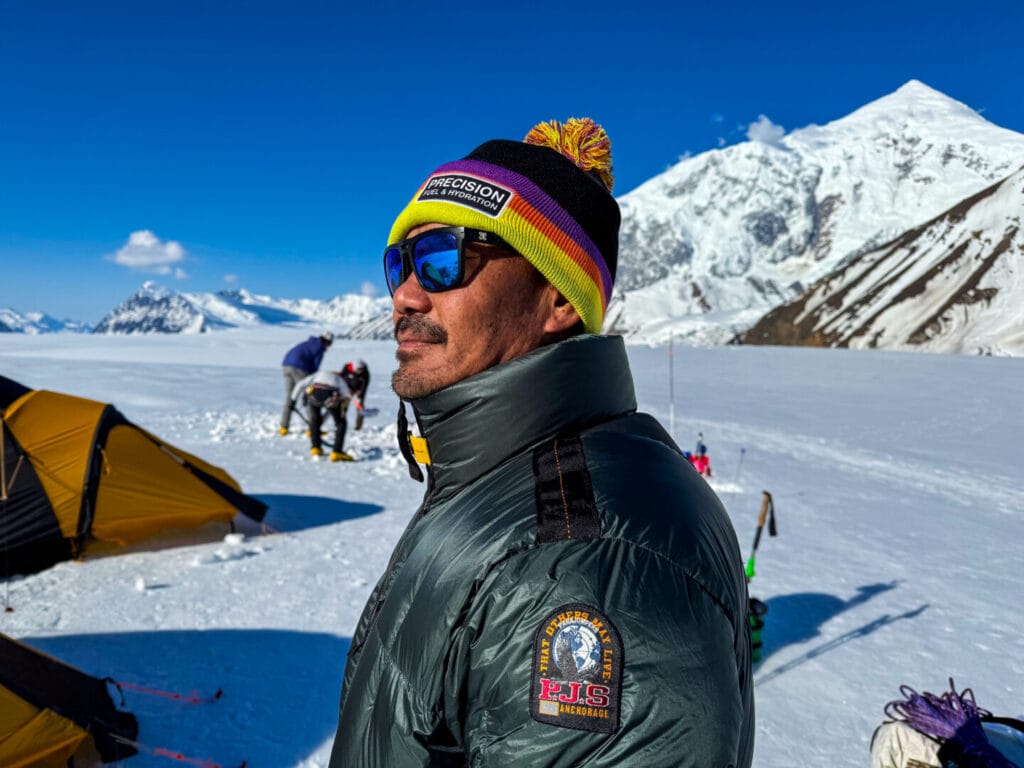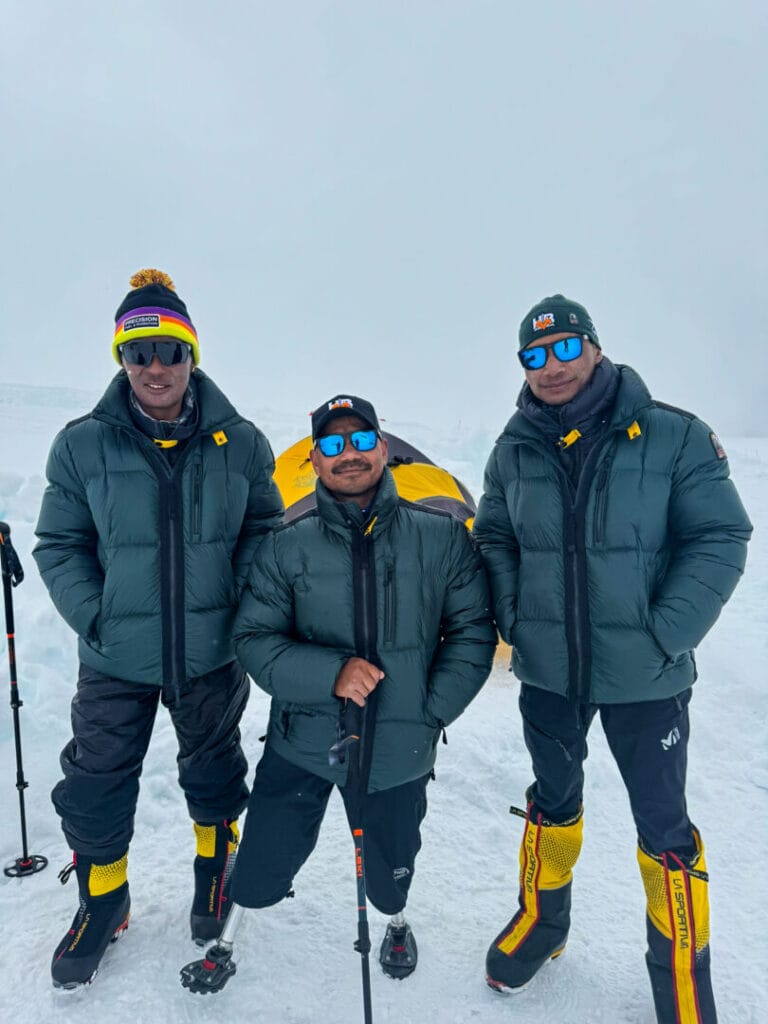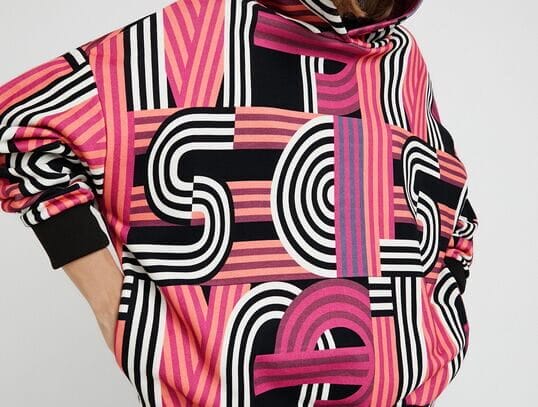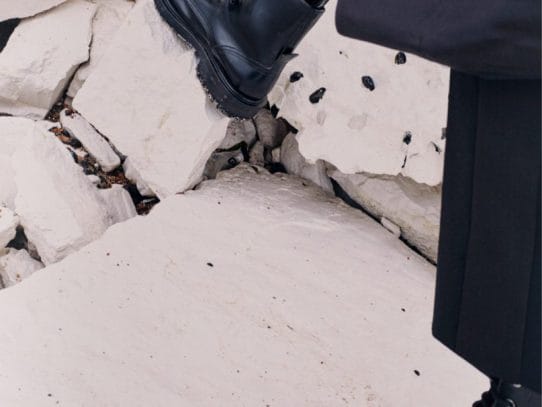Meet Hari Budha Magar, the first double above-the-knee amputee to summit Mount Everest. His incredible journey not only challenges perceptions of disability but also inspires countless others to push their limits and conquer their own mountain
Mountaineering, a sport that captures the spirit of human perseverance, originated centuries ago, with roots in the Alpine climbs of Europe. The first documented climb of Mount Everest, the world’s tallest peak, occurred in 1953 by Sir Edmund Hillary of New Zealand and his Sherpa guide, Tenzing Norgay. Located in the Himalayas, Mount Everest straddles the border between Nepal and Tibet, standing at an awe-inspiring 8,848.86 meters (29,031.7 feet). This colossal peak draws adventurers from around the globe, but it is one of the most dangerous climbs, claiming lives almost every year. As of 2023, over 6,000 people have summited Mount Everest, with only a small fraction managing to complete the feat despite the deadly risks of extreme altitude, unpredictable weather, and avalanches. Remarkably, a handful of these climbers have been double amputees, defying both nature and physical limitations.
Among these incredible athletes stands Hari Budha Magar, a Gurkha veteran and double above-knee amputee, whose story of perseverance and fortitude has redefined what it means to conquer the impossible. To fully appreciate Hari’s extraordinary achievements, it is essential to first understand the significance of his background as a Gurkha.
The Legacy of the Gurkhas: Warriors of Strength and Honor
Gurkhas are renowned soldiers from Nepal who have served in the British Army since 1815, known for their fearlessness, discipline, and exceptional combat skills. The Gurkha regiment originated during the Anglo-Nepalese War (1814-1816) when British officers were so impressed by the Nepalese soldiers’ bravery that they recruited them into their army. The iconic
, a weapon that symbolizes their indomitable spirit, is an emblem of the Gurkha legacy. Today, Gurkhas continue to serve with distinction, embodying loyalty, resilience, and an unmatched commitment to duty.
Hari Budha Magar: From Soldier to Survivor
Hari Budha Magar’s life story is nothing short of inspiring. Born into a humble family in Nepal, Hari joined the Gurkhas, a path many young men from his country aspire to follow. He served with distinction until a fateful day in 2010, when he lost both of his legs above the knee to an IED (improvised explosive device) while on duty in Afghanistan. Despite this life-altering injury, Hari refused to let his disability define him.
After years of rehabilitation and reflection, Hari decided to challenge the world’s preconceived notions of disability by attempting to summit the highest peaks on each continent—a mission known as the “7 Summits Challenge.” In 2023, Hari accomplished what many believed was impossible: he became the first double above-knee amputee to summit Mount Everest.

The Climb to Everest: Hari’s Defining Moment
Hari’s ascent of Mount Everest was not just a physical challenge but a monumental legal and societal one. In 2017, Nepal banned double amputees and blind climbers from attempting to summit Everest, citing safety concerns. Hari fought tirelessly to overturn this ban, arguing that people with disabilities have the right to challenge themselves and redefine their own limits. His persistence paid off, and in 2023, he became a symbol of victory, courage, and hope when he reached the summit of Mount Everest.
The climb itself was grueling—enduring the death zone where oxygen levels are perilously low, navigating through icefalls, crevasses, and avalanches. Hari had to adapt his prosthetic legs to the harsh environment, relying on his mental and physical strength to push through unimaginable barriers. His victory was not just a personal triumph but a global message that “disability is not an inability.”
Double Amputees Who Have Conquered Everest
Hari’s Everest achievement adds him to a small but elite group of double amputees who have reached the peak. Statistics reveal that the success rate for climbers with disabilities is extraordinarily low, making Hari’s feat all the more remarkable. His name now stands alongside others who have proven that with determination, no mountain is insurmountable.
Partnership with Parajumpers: A Symbol of Strength and Innovation
In addition to his climbing endeavors, Hari has partnered with Parajumpers, a brand known for its high-performance outerwear designed to withstand extreme conditions. Founded in 2006 and inspired by the real-life Parajumpers of Alaska, the brand represents a blend of technical functionality, innovation, and fashion. Parajumpers congratulated Hari on his Everest success and continue to support him in his 7 Summit Challenge, a mission that aligns perfectly with the brand’s values of endurance, survival, and adaptability.
Denali: Another Record Broken
In 2024, Hari broke yet another record when he became the first double above-knee amputee to summit North America’s tallest peak, Mount Denali, as part of his 7 Summits Challenge. Known for its perilous conditions, Denali is a mountain that only half of all climbers successfully ascend. Hari’s preparation included training in the U.S. to adapt his prosthetic limbs to the snow and cold, using custom technical garments and Parajumpers’ lightweight down puffers to combat the elements. After two weeks of harsh conditions, Hari reached the summit on June 28, 2024, further proving that “nothing is impossible.”

A Hero for All
Hari Budha Magar’s story is one of relentless courage, determination, and resilience. From his service as a Gurkha soldier to his life as a disability rights advocate and record-breaking mountaineer, he has shown that the human spirit is capable of extraordinary things. His alignment with Parajumpers, a brand that champions survival and endurance, is a testament to his role as a modern-day hero. Hari’s journey continues to inspire millions worldwide to believe in their ability to overcome, no matter the obstacle.
As he climbs closer to completing the 7 Summit Challenge, Hari’s message rings clear: “Life is all about adaptation.” His life serves as proof that limitations exist only in the mind, and with determination, anything is possible.



Meet Hari Budha Magar, the first double above-the-knee amputee to summit Mount Everest. His incredible journey not only challenges perceptions of disability but also inspires countless others to push their limits and conquer their own mountain
In this exclusive interview, Hari Budha Magar shares his incredible journey of becoming the first double above-the-knee amputee to summit Mount Everest. He reveals the intense mental and physical preparation required for such a monumental feat and how teamwork played a crucial role in his success. Readers will also learn about Hari’s inspiring partnership with Parajumpers, his advocacy for disability awareness, and his plans to conquer the highest peaks on all seven continents. This conversation offers an intimate look at the resilience, determination, and vision that drive Hari’s extraordinary achievements.
Joseph DeAcetis: Hari, your story is truly inspiring. As the first double above-the-knee amputee to summit Mount Everest, what motivated you to embark on this monumental journey, and how did you physically and mentally prepare for such an extreme challenge?
Hari Budha Magar: I was born in Nepal and fascinated by Mount Everest as a child and I also thought to myself can I climb? I couldn’t climb when I was young and when I was serving in the British Army. After I lost my legs I would look at the mountain and think ‘how am I going to do it?’. Later, I decided that I wanted to climb Evererst to bring awareness to disability. It is mentally and physically challenging. Once I felt that I was mentally prepared, getting physically prepared was pretty easy. Once we set our mind to something, our body will follow. To physically train for Everest, I learnt about safety, kit and equipment. I trained at home at the gym for two hours a day, five days a week. I did a lot of lower body exercises.’
Joseph DeAcetis: Parajumpers has partnered with you on this incredible journey. Could you tell us how this collaboration came about and what it means to you to represent the brand during such a significant achievement?
Hari Budha Magar: ‘I was looking for partners to support me for my Everest expedition and there were many brands who did not believe in me but Parajumpers did. We also share the same values as it is a family run brand. They did not just support me just with kit and equipment but also with their values and ethics. I am very grateful to get supported by them. Parajumpers not only just supported me but my entire team. Mountain climbing is a team effort and Parajumpers supported all of us which allowed me to summit Everest.’


Joseph DeAcetis: Mount Everest is known for its treacherous terrain and unpredictable weather. Can you describe some of the toughest moments during the climb, and how did you overcome those challenges?
Hari Budha Magar: Climbing Everest was one of the toughest things that I have ever done in my life. It wasn’t just the toughest but also the most dangerous. One of the toughest moments was our 14 hour climb from Camp 3 to Camp 4. We arrived at 6 o’clock in the evening and the team announced that we were going to summit in two hours. I was so tired but I knew that it wouldn’t be possible to do this again so I decided that as long as my team is safe, I would keep going until I collapsed. So we kept going. As we went up some of the team couldn’t continue but five of us did and summited. On our way down we ran out of oxygen and one of the assistant kitchen staff who had never been up Everest climbed up with oxygen and saved our lives.’
Joseph DeAcetis: You hold two Guinness World Records, which is an extraordinary feat. Can you share what these records mean to you personally and how they’ve helped raise awareness for the disabled community?
Hari Budha Magar: ‘I am very grateful to have two Guinness World Records but I never worked for records. My aim was to raise awareness for disability and I’m very grateful to have a platform and credibility to spread awareness.’



Joseph DeAcetis: You’ve often spoken about the mental aspect of overcoming adversity. What role did mental fortitude play in your climb, and how do you maintain that mindset in your day-to-day life?
Hari Budha Magar: ‘Before my injury I did not know how powerful our minds are. This is why I struggled for almost two years after my injury and did not know what to do. Our mental power is absolutely amazing. As I said earlier, if we set our minds our body will follow however possible. It will adapt and find a way to follow. One of the most powerful things I realized is the mind. How do I maintain my day to day? It’s the most simple thing. In life big things don’t happen at once. Small steps in life are what are the most important. This is the mindset I had to conquer Everest. Mentally I surround myself with the right people. Being able to do small things by myself such as brush my teeth or shower, it helps me feel happy and accomplished and helps with our mental well being. I also meditate and practice mindfulness to stay mentally strong.’
Joseph DeAcetis: In addition to your accomplishments on Everest, what other mountains or challenges do you have on the horizon, and how do you plan to continue pushing the limits of what’s possible?
Hari Budha Magar: ‘After climbing Everest I realized that I had climbed to the highest peaks in 3 continents. I decided to climb the highest peak in all 7 continents. to raise awareness on disability and inspire people to climb their own mountain whatever that may be. I have dedicated my life to raising awareness to disability. No matter what I may be doing in the future whether it is sports, adventure, social work or business, it will always be linked to raising awareness on disability. My next climb is the tallest mountain in South America, Aconcagua, in Argentina in January 2025.’


Joseph DeAcetis: Mountaineering is a team effort. Can you talk about the importance of the people around you during the climb and how teamwork played a role in your success?
Hari Budha Magar: ‘Before we go to the actual mountain, there are many people who help me climb my own invisible mountains such as overturning the ban on disabled people climbing Everest, raising the funds, finding the prosthetic legs, and training me to get up there. But when you get up there, it is all about teamwork. Many times teams don’t work but we need to adapt to work together. Some of my team members risked their lives to get me to the top and we were able to summit Everest and other mountains.’
Joseph DeAcetis: Your journey is not only about physical endurance but also about changing perceptions. How do you hope your story will inspire others facing their physical, mental, or emotional challenges?
Hari Budha Magar: ‘I get inspired by lots of other people. I see some of my friends who are triple and quadruple amputees who do amazing things. When I see this, my laziness goes away and I start doing something. In the same way, I hope that me climbing Everest with no legs will inspire people with disabilities but also able bodied people to climb whatever mountains that they may have.’

Joseph DeAcetis: How do you balance your advocacy for the disabled community with your extreme athletic endeavors, and what message do you want to send to others about the power of resilience?
Hari Budha Magar: ‘Sometimes I find it difficult to balance family, friends, communities and other responsibilities. To get out of that bubble and go and climb mountains can be hard. But if we have a passion and continuously pursue that goal without giving up then we can make things happen. It is dreams that keep us up late at night and get up early in the morning. There are always reasons in life for why we do the things we do and as the reasons become bigger, we can challenge and accomplish more. This in turn makes it good for us, our family, friends and our community and possibly our country and humanity. Passions and dreams are what make us resilient.’
Joseph DeAcetis: Looking ahead, how do you see your partnership with Parajumpers evolving, and what role do fashion and functionality play in extreme sports like mountaineering?
Hari Budha Magar: ‘I look forward to a continued partnership with Parajumpers until I complete my 7 summits and beyond. It’s not just the best kit but it is also important to look and feel good to give you confidence. The brand not only support me but my whole team which helps me a lot. I also really like the values that they carry. I am really looking forward to my continued partnership with Parajumpers.’
In speaking with Hari Budha Magar, I was deeply moved by his unwavering determination and resilience. His journey to summit Everest as a double above-the-knee amputee goes beyond a personal achievement; it’s a powerful testament to the strength of the human spirit and the possibilities that arise when we refuse to accept limitations. Hari’s story serves as a profound reminder that with the right mindset, teamwork, and perseverance, we can overcome even the most daunting challenges. His mission to raise awareness for the disabled community is nothing short of inspiring, and it is clear that he will continue to push boundaries and empower others to climb their own mountains—whether literal or figurative. Hari’s legacy is one of courage, hope, and the relentless pursuit of greatness.
About the Author:
Joseph DeAcetis is a visionary in the world of fashion, renowned as the best wardrobe stylist and art director of his generation. His impressive accolades and unmatched expertise set him apart in the industry. Joseph covers the intersections of style, culture, art, and fashion, with a particular emphasis on the evolving status of menswear.
Throughout his illustrious career, Joseph has penned award-winning columns for top-tier publications such as Esquire, People Magazine, Robb Report, and Playboy. His profound insights and engaging narratives have made him a leading voice in fashion journalism.
Most recently, Joseph served as the creative fashion director for Forbes Media, where he excelled as both a critic and reporter. His extensive body of work highlights the importance of dressing for success and explores how technological advancements are reshaping the fashion industry. Joseph’s authoritative yet approachable voice continues to inspire and influence fashion enthusiasts worldwide.
Comments, questions, or feedback? message me at stylelujo.com
Save Article










